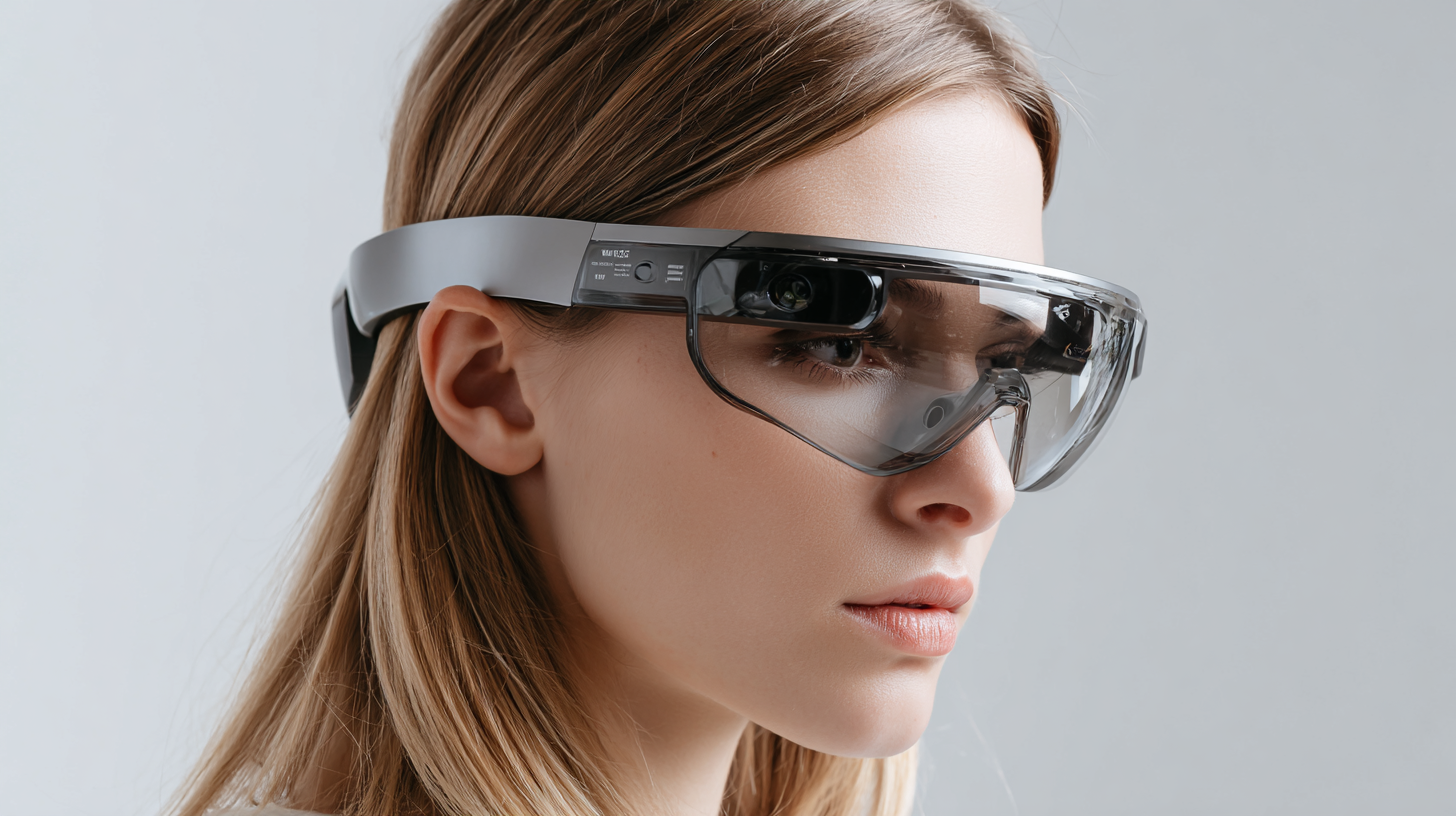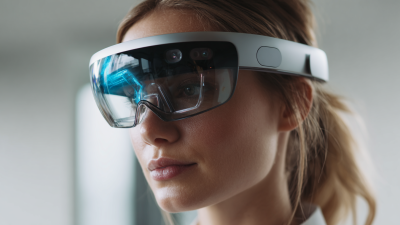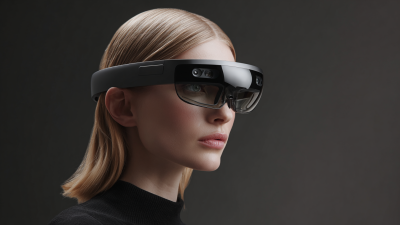 +86-13613020876
+86-13613020876



The rapid advancement of technology has paved the way for revolutionary innovations in various sectors, with augmented reality (AR) emerging as a game-changer in how we interact with digital information. According to a recent report from the International Data Corporation (IDC), the global AR market is projected to reach $198 billion by 2025, reflecting a compound annual growth rate (CAGR) of 43.8%. A significant driver of this growth is the advent of lightweight AR glasses, which promise to enhance user experience by providing seamless integration of digital content into the physical world. These devices, now increasingly designed with user comfort in mind, enable hands-free operation while delivering rich, immersive experiences across industries such as gaming, healthcare, and education. As the demand for intuitive and versatile AR solutions continues to rise, lightweight AR glasses stand at the forefront of this technological revolution, poised to redefine everyday interactions and professional applications alike.

The evolution of augmented reality (AR) has been marked by significant milestones and groundbreaking innovations that have transformed how we interact with digital content. The journey began in the 1960s with the invention of the first head-mounted display, which laid the foundation for future developments. As technology progressed, the introduction of smartphones equipped with AR capabilities in the 2000s allowed users to experience augmented environments through their handheld devices, making AR more accessible and popular among the masses.
In recent years, we've seen a shift towards lightweight AR glasses, which promise to revolutionize the user experience further. These innovative devices utilize advanced optics and compact computing power to provide seamless augmented experiences without the bulk of traditional headsets. Key advancements in battery life, display technology, and user interface design have made these glasses not only practical but also desirable for everyday use. As companies continue to invest in research and development, the next generation of AR glasses is poised to expand our understanding of reality and enhance our ability to interact with both digital and physical worlds in ways we previously thought impossible.
Lightweight AR glasses are poised to revolutionize the user experience by seamlessly blending the digital and physical worlds. According to a report by IDC, the global AR market is expected to reach $198 billion by 2025, driven largely by advancements in wearable technology. These glasses provide users with hands-free access to information, enhancing productivity and engagement in various settings from education to retail. With features such as gesture control and voice commands, they offer an intuitive interface that caters to the demands of modern users.
Tips: When selecting AR glasses, consider the battery life and weight, as these factors significantly affect comfort during prolonged use. Look for models that prioritize user-friendly designs to ensure that your experience is both immersive and practical.
The integration of lightweight AR glasses into everyday life can significantly shape user interactions. For instance, a study by Perkins Coie highlights that 78% of businesses see potential advantages in AR for training and education. By providing real-time data overlay and context-aware content, AR glasses empower users to make informed decisions more efficiently. This capability is particularly beneficial in fields such as healthcare, where surgeons can access critical information without diverting their attention from the procedure.

The augmented reality (AR) glasses market is on the brink of exponential growth. According to recent market reports, the global augmented reality market is projected to soar from $140.34 billion in 2025 to an astonishing $1716.37 billion by 2032, recording a compound annual growth rate (CAGR) of 43.0%. This rapid expansion reflects a burgeoning interest in lightweight AR glasses technology, which promises to revolutionize how we interact with digital content and our physical environment.
As AR glasses become more accessible and integrated into daily life, various industries are expected to experience significant transformation. The augmented reality glasses market alone is anticipated to reach USD 115.3 billion, growing at a CAGR of 19.1% during the forecast period. This growth will likely be driven by advancements in technology, increased demand for immersive experiences, and applications in sectors such as healthcare, education, and retail.
Tip: Businesses looking to leverage AR technology should focus on user experience to ensure adoption and retention. Prioritizing lightweight designs and seamless functionality can greatly enhance user satisfaction. Moreover, companies should invest in understanding industry-specific applications of AR to maximize its potential in their operations.
The recent advancements in lightweight augmented reality (AR) glasses technology represent a significant leap toward integrating AR into everyday life. Companies are tackling the challenges of developing lightweight designs while ensuring high-quality visual experiences. NVIDIA's new patent for backlight-free augmented reality digital holographic technology highlights the potential solutions that can enhance visuals without the bulk of traditional display methods. This innovation is crucial as AR glasses must balance performance with user comfort to achieve widespread adoption.
Tips for aspiring AR developers include focusing on user-centric designs and leveraging emerging materials that offer both durability and lightweight properties. Keeping abreast of trends in micro-LEDs and transparent display technologies can foster innovative applications that enhance the AR experience. Additionally, exploring collaborations with companies specializing in advanced optical displays may provide the necessary breakthroughs needed to push the boundaries of what AR technology can accomplish.
As the market for AR glasses continues to grow, innovation will undoubtedly come from addressing the existing challenges in developing lightweight and efficient technologies. Continuous investment in research and development will be essential to ensure that the next generation of AR glasses not only meets consumer expectations but also sets new standards in the industry.
| Feature | Current Status | Challenges | Proposed Solutions | Future Trends |
|---|---|---|---|---|
| Weight | Under 100g | User comfort | Use of lightweight materials | Further reduction to below 70g |
| Battery Life | 4-6 hours | Limited usage time | Development of more efficient batteries | Extended life to 10 hours |
| FOV (Field of View) | 50 degrees | Narrow viewing experience | Improvement in optics technology | Broader FOV up to 120 degrees |
| Display Resolution | 1080p | Pixelation issues | Higher resolution displays | 4K resolution capability |
| Connectivity | Wi-Fi and Bluetooth | Limited bandwidth | 5G integration | Enhanced connectivity options |
The consumer adoption trends for augmented reality (AR) solutions are witnessing a significant surge, driven by advancements in lightweight AR glasses technology and a growing demand across various sectors. According to recent industry analyses, the global AR glasses market is projected to reach approximately USD 115.3 billion by 2035, with an impressive CAGR of 19.1% during the forecast period. This growth reflects an increasing interest from consumers who are seeking innovative and immersive experiences.

Furthermore, the interactive packaging market is anticipated to reach around USD 54.19 billion by 2025, highlighting the integration of AR alongside technologies like NFC and smart sensors in the fast-moving consumer goods (FMCG) and pharmaceutical industries.
The rising popularity of social commerce is notably fueling innovations in virtual try-on features, further enhancing user engagement and acceptance of AR solutions.
The immersive technology market, valued at USD 44.1 billion in 2024, is expected to grow to USD 184.3 billion by 2030, demonstrating the transformative impact AR is having on consumer behavior and industry practices.






